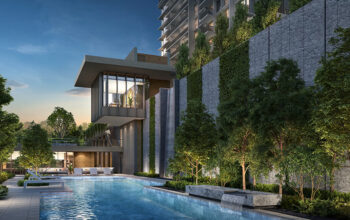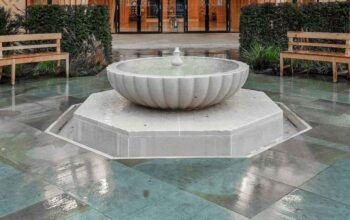A home is more than just four walls — it’s a reflection of one’s personality, lifestyle, and emotions. The way a home is designed plays a powerful role in shaping how we live, feel, and connect with our surroundings. From the color palette to the choice of furniture, every element has the potential to turn a simple house into a warm, functional, and inspiring space. This is where residential interior design steps in — combining creativity, architecture, and psychology to create environments that are both beautiful and meaningful.
If you want to explore key ideas and techniques for creating a modern, serene home, understanding the foundation of residential interior design is the perfect place to start.
The Core Philosophy of Residential Interior Design
Residential interior design focuses on transforming personal living spaces to meet the aesthetic and functional needs of the people who occupy them. Unlike commercial design — which caters to business goals — residential design is deeply personal. It’s about creating a space that feels like home in every sense of the word.
The approach considers not only visual appeal but also comfort, practicality, and emotional resonance. Whether it’s a minimalist apartment, a cozy family home, or a luxury condominium, the objective remains the same: to balance form and function seamlessly.
Designers often begin by understanding the homeowner’s preferences, lifestyle, and vision — translating these insights into textures, colors, layouts, and materials that complement the person’s everyday life.
Essential Elements That Define a Well-Designed Home
1. Space Planning
Good design starts with effective space planning. This involves organizing the layout to ensure a natural flow between areas — from the living room to the kitchen and bedrooms. A well-planned space maximizes functionality while maintaining a sense of openness.
Smart spatial design can make even compact homes feel larger, airier, and more organized.
2. Color Palette and Lighting
Colors have a strong psychological effect on mood. Soft neutrals create calmness, earthy tones bring warmth, and bold accents add character. Lighting complements this — both natural and artificial light can transform the ambiance of a space.
For instance, natural light enhances energy and freshness, while layered lighting (ambient, task, and accent) adds depth and sophistication after sunset.
3. Material and Texture Harmony
The choice of materials — such as wood, stone, metal, or fabric — defines the overall tone of the interior. Mixing different textures, like smooth marble with natural rattan or linen, creates visual balance and tactile comfort.
This harmony ensures that a home feels both visually engaging and physically inviting.
4. Furniture and Layout
Furniture selection is not just about style — it’s about scale and purpose. A beautifully designed sofa or dining table must fit the proportions of the room and support daily activities comfortably.
Modern residential design often embraces multi-functional furniture — like storage ottomans, convertible sofas, or modular shelving — to enhance both practicality and style.
5. Personalization and Character
A home should tell a story — your story. Personal touches like artwork, travel souvenirs, or family heirlooms infuse life and individuality into the design.
While designers emphasize cohesion, it’s equally important to reflect the homeowner’s identity. A curated mix of personal artifacts and intentional décor creates authenticity that no catalog design can replicate.
Popular Styles in Modern Residential Design
Minimalist Design
Rooted in the “less is more” philosophy, minimalism promotes simplicity and functionality. Clean lines, neutral colors, and uncluttered spaces define this timeless style.
Scandinavian Design
Known for its warmth and comfort, Scandinavian design combines simplicity with nature-inspired materials and soft color palettes. It emphasizes coziness and functionality.
Industrial Design
Characterized by raw textures like exposed brick, metal, and concrete, industrial interiors have an urban and edgy vibe. They’re ideal for loft apartments and open-concept homes.
Modern Contemporary Design
Sleek, sophisticated, and ever-evolving, contemporary design focuses on current trends — like open layouts, statement lighting, and eco-friendly materials.
Traditional and Transitional Designs
Traditional design features ornate details and rich tones, while transitional style merges classical elements with modern simplicity, creating timeless balance.
The Importance of Functionality in Residential Interiors
While aesthetics catch the eye, functionality ensures comfort and livability. Every design decision should enhance convenience — from smart storage solutions to ergonomic layouts.
For example, designing an open kitchen with an island encourages interaction while cooking. Similarly, well-placed furniture can improve flow and accessibility without cluttering the space.
A truly well-designed home should not only look beautiful but also feel effortless to live in.
The Role of Lighting and Natural Elements
Lighting is one of the most underestimated yet powerful tools in interior design. It defines mood, highlights focal points, and influences perception of space.
Incorporating natural light through large windows, glass doors, or skylights not only enhances visual appeal but also improves mental well-being. Complementing this with soft artificial lighting — like warm pendants or floor lamps — adds comfort and ambiance.
Additionally, bringing nature indoors through indoor plants or natural textures (wood, stone, or bamboo) strengthens the connection to the environment, promoting a sense of calm and vitality.
Sustainable and Smart Design Trends
Sustainability is shaping the future of residential interiors. Eco-conscious homeowners are increasingly choosing materials that are renewable, recycled, or energy-efficient.
Smart home technology also plays a growing role — integrating features like automated lighting, temperature control, and security systems for both comfort and efficiency.
This blend of sustainability and innovation ensures homes remain adaptable to modern lifestyles while minimizing environmental impact.
Achieving Balance: The Heart of Good Design
The best interiors are those that feel natural — not overly designed. Striking the right balance between beauty, function, and personality is what makes a house a home.
Harmony in proportion, symmetry, and material usage creates visual comfort. Whether you lean toward a minimalist, contemporary, or eclectic style, the ultimate goal is to achieve equilibrium — where every space feels intentional and emotionally grounded.
Final Thoughts
Residential interior design is the art of transforming a physical structure into a personal sanctuary. It’s not just about decorating; it’s about understanding how design influences comfort, mood, and daily living.
From thoughtful space planning to mindful material selection, every design decision contributes to how people experience their home. Whether you prefer clean lines, cozy warmth, or bold statements, what matters most is that your home reflects your values and enhances your quality of life.
A beautifully designed home doesn’t just look appealing — it feels alive, functional, and timeless. Through intentional design, your living space becomes more than a shelter; it becomes a story of who you are and how you live.




